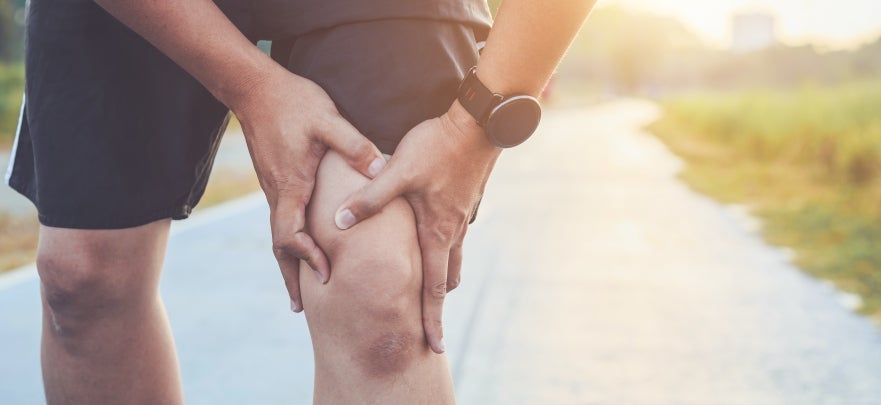Preventing and Treating the Most Common Sports Injuries
We’ve all been there. Whether a weekend warrior or a regular at the gym, we’ve pushed our bodies a little too far and injured ourselves. Sometimes preventing common sports injuries is beyond our control, but many times they are preventable.
As you’ve heard, before any high-intensity activity, you should warm up to prevent common sports injuries. Warming up increases blood flow to the muscles, promotes flexibility, and could decrease injuries.
If you haven’t run, lifted heavy weights, swung a bat or anything else in a long time, don’t run out and overdo it right from the start. Preventable injuries are often the result of overuse. Work back into the activity slowly to get your muscles ready for higher intensity use in the future.
Recognize when you’re fatigued and have left it all on the field. You are feeling this way for a reason, and pushing through fatigue only increases your chances of injury.
For the most part, common sports injuries are mild or moderate, meaning there's some damage, but everything is still in place. You can treat the injuries at home using the RICE method described below. But understand that some common sports injuries may take months to heal.
-
R — Rest. Restricting activity will prevent the worsening of the injury.
-
I — Ice. Apply ice immediately after a common sports injury. Use ice for twenty minutes every one to two hours for the first forty-eight hours after the injury. Icing will help reduce swelling. Don't use heat as it encourages swelling and inflammation.
-
C — Compression Applying compression with an elastic bandage will help reduce swelling.
-
E — Elevate. Elevating the injured area above the heart will also reduce swelling.
Here are some specific tips for treating each of the most common sports injuries:
Ankle sprain
Most athletes have experienced a sprained ankle, which typically occurs when the foot turns inward. This turning stretches or tears the ligaments on the outside of the ankle, which are relatively weak.
With an ankle sprain, it’s important to exercise to prevent loss of flexibility, strength, and re-injury. Your doctor or physical therapist can provide you with the kind of exercises you should do.
Groin pull
Pushing off in a side-to-side motion causes strain of the inner thigh muscles, or groin.
Compression, ice, and rest will heal most groin injuries. Be cautious about jumping back into full activity too quickly as you can aggravate a groin pull and potentially turn it into a long-term problem. If there is significant swelling, you should see a doctor as soon as possible.
Hamstring strain
You have three muscles in the back of your thigh that make up the hamstring. Sharp uncontrolled overextension of your leg can overstretch the hamstring. Hamstring injuries are slow to heal because of the constant stress applied to the injured tissue from walking. Complete healing can take six to twelve months. If you’re active, re-injury is common because it’s challenging to remain inactive long enough to completely heal.
Shin splints
Shin splints are simply pains down the front of the lower legs. They are typically brought on by running when starting a more strenuous training program, such as long runs on paved roads.
Rest, ice, and over-the-counter pain medicine are the mainstays of treatment. This injury is rarely an actual stress fracture of the shin bone. But if the pain persists, even with rest and proper care, you should see your doctor. If it does turn out to be a stress fracture, proper healing will require prolonged rest and could take a month or more.
Knee injury: ACL tear
Quick, sharp turns or stops, getting hit from the side can strain or tear the anterior cruciate ligament (ACL). A complete tear will make a horrible pop sound. Any time you suspect an ACL injury, head to the doctor. These are the most severe of the common sports injuries and usually require surgery if you want to remain active.
Knee injury: Patellofemoral syndrome
I know, you’re still trying to figure out how to say it. In simple terms, it’s an injury that can result from the repetitive movement of your kneecap (patella) against your thigh bone (femur), which can damage the tissue under the kneecap. To treat and heal from this injury requires patience as it could take up to six weeks to clear up. You should stick to low-impact exercise and quadriceps exercises to relieve pain.
Tennis elbow (epicondylitis)
If you play golf or tennis, you’ve experienced this injury. It happens when repetitive use of the elbow, like in tennis and golf, irritates or makes tiny tears in the elbow's tendons. It usually involves the outside of the elbow. Tennis elbow will often clear up by staying off the tennis court or golf course until the pain improves.
For many of these injuries, over-the-counter pain relievers usually make the pain tolerable. If they don't, it may be best to see a doctor. You may be tough, with a high tolerance for pain, but it is extremely important to be smart. If you suspect a severe injury with the following symptoms, see a doctor.
-
Deformities in the joint or bone, it looks crooked, or moves abnormally
-
You cannot bear weight or can't use the limb without it giving way
-
Excessive swelling
-
Changes in skin color beyond mild bruising
-
It's not getting any better after a few days of RICE therapy






